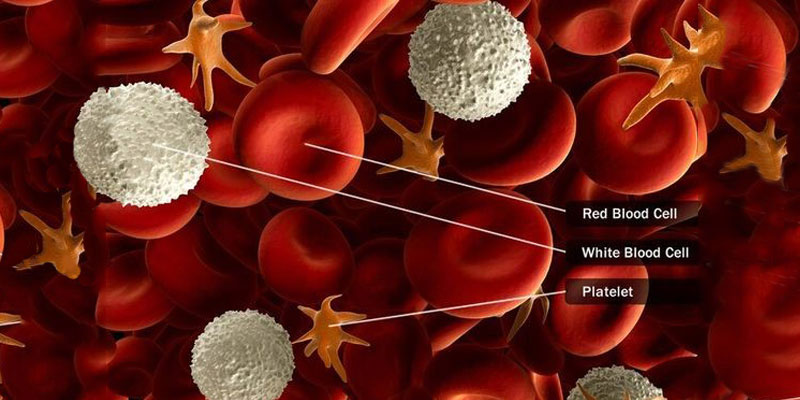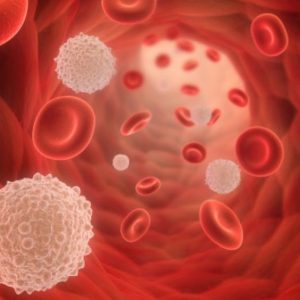Introduction
Blood cancer, also known as hematologic cancer, is a term that encompasses a variety of cancers that affect the blood, bone marrow, and lymphatic system. These cancers can disrupt the normal production and function of blood cells, leading to serious health issues. Blood cancers are broadly classified into three main types: leukemia, lymphoma, and multiple myeloma. This article provides an overview of these types, their symptoms, causes, diagnosis, and available treatment options.
Types of Blood Cancer
- Leukemia

– Overview: Leukemia is a cancer of the blood-forming tissues, including the bone marrow and the lymphatic system. It leads to the overproduction of abnormal white blood cells, which do not function properly.
– Types: There are several types of leukemia, including acute lymphoblastic leukemia (ALL), acute myeloid leukemia (AML), chronic lymphocytic leukemia (CLL), and chronic myeloid leukemia (CML).
– Symptoms: Common symptoms include fatigue, frequent infections, fever, easy bruising or bleeding, weight loss, and swollen lymph nodes.
- Lymphoma
– Overview: Lymphoma is a type of blood cancer that affects the lymphatic system, which is part of the immune system. It begins in the lymphocytes, a type of white blood cell.
– Types: The two main types of lymphoma are Hodgkin lymphoma (HL) and non-Hodgkin lymphoma (NHL). The classification depends on the specific characteristics of the cancerous cells.
– Symptoms: Symptoms of lymphoma may include swollen lymph nodes, fever, night sweats, unexplained weight loss, and itching.
- Multiple Myeloma
Overview: Multiple myeloma is a cancer that forms in plasma cells, a type of white blood cell responsible for producing antibodies. The abnormal plasma cells accumulate in the bone marrow, crowding out healthy cells.
Symptoms: Patients with multiple myeloma may experience bone pain, fractures, fatigue, frequent infections, and elevated calcium levels in the blood.
Causes and Risk Factors:
The exact cause of blood cancer is often unknown, but several factors can increase the risk of developing these cancers:
– Genetic predisposition: A family history of blood cancer can increase the risk.
– Exposure to radiation: High levels of radiation, such as from radiation therapy or nuclear accidents, can increase the risk.
– Chemical exposure: Prolonged exposure to certain chemicals, such as benzene, is linked to an increased risk of blood cancer.
– Previous cancer treatment: Chemotherapy or radiation therapy for other cancers can increase the risk of developing blood cancer later in life.
– Age and gender: Some types of blood cancer are more common in older adults and vary by gender.
Diagnosis
Diagnosing blood cancer involves a combination of physical exams, medical history, and specialized tests:
– Blood tests: A complete blood count (CBC) can detect abnormalities in blood cells.
– Bone marrow biopsy: A sample of bone marrow is examined to identify cancerous cells.
– Imaging tests: CT scans, MRIs, and PET scans can help determine the extent of the cancer.
– Genetic tests: These can identify specific mutations or abnormalities in the cancer cells that may influence treatment decisions.
Treatment Options
Treatment for blood cancer depends on the type, stage, and overall health of the patient. Common treatment options include:
- Chemotherapy: The use of drugs to kill or slow the growth of cancer cells. It is a standard treatment for many types of blood cancer.
- Radiation Therapy: High-energy radiation is used to target and destroy cancer cells. It is often used in combination with other treatments.
- Stem Cell Transplant: Also known as a bone marrow transplant, this procedure replaces damaged or destroyed bone marrow with healthy stem cells, which can regenerate healthy blood cells.
- Targeted Therapy: These drugs specifically target cancer cells’ unique characteristics, such as specific proteins or genetic mutations, sparing more healthy cells than traditional chemotherapy.
- Immunotherapy: This treatment boosts the body’s natural defenses to fight cancer. It includes treatments like CAR T-cell therapy, where a patient’s T-cells are modified to attack cancer cells.
- Surgery: In some cases, surgery may be necessary to remove tumors or to take biopsies.
Conclusion
Blood cancer is a complex group of diseases that require prompt and specialized care. Understanding the types, symptoms, and treatment options is crucial for early detection and effective management. While a diagnosis of blood cancer can be daunting, ongoing research and advances in treatment continue to offer hope for better outcomes and improved quality of life for patients.


